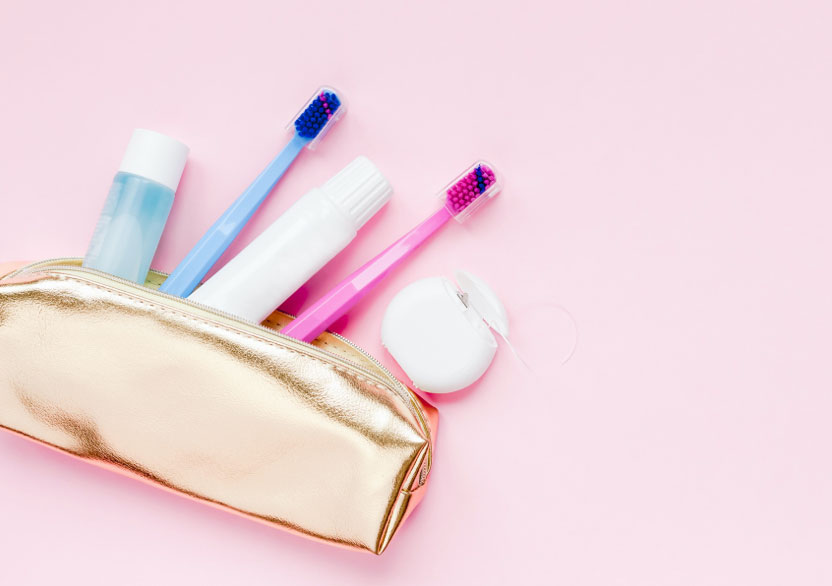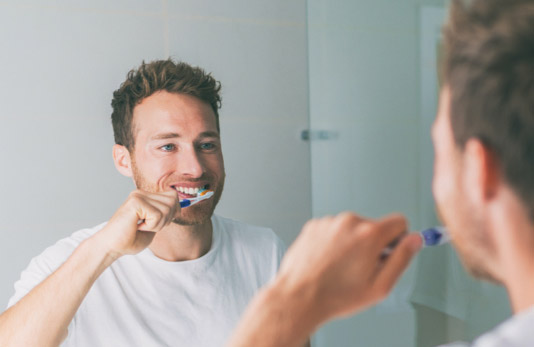Travel tips for your teeth

Vacation is the perfect time to kick back and forget about your responsibilities. But don’t let your dental health fall by the wayside. Follow these tips to stay on top of your oral health wherever you go.
1. Keep supplies handy
2. Skip the travel cases
3. Choose carry-on
Hopping on a plane? Keep a small tube of toothpaste in a quart-size sealable plastic bag, along with your toothbrush and floss.
Each container can have up to 3.4 ounces (100 milliliters) of liquid or gel. Carrying your dental supplies with you is better than stowing them in your check-in luggage, because it lets you brush your teeth during the flight and any layovers you might have.

4. Visit the dentist before you leave
Don’t leave home with a toothache. If you’re experiencing any pain, make an appointment with your dentist before you leave. The last thing you need is a dental emergency far from home.
If you have fillings or have had other restorative treatment, ask your dentist to check your mouth before you fly. Air trapped in your teeth can expand or contract at extreme altitudes, causing pain, inflammation and even loose fillings, crowns or dentures. This condition, called “tooth squeeze” or barodontalgia, can also occur while scuba diving.
5. Stick to your routine
6. Understand your out-of-network coverage
Even with the best preparation, emergencies can happen. Before you leave, check your plan's coverage for out-of-network care. See if visiting an in-network dentist is a requirement of your plan.
If not, you can receive partial or full reimbursement for covered procedures when you visit any licensed dentist. Whether you’re taking a road trip or flying to another state, you can stay in network almost anywhere in the country.
7. Get emergency treatment quickly
Even with the best preparation, emergencies can happen.
Whether you’re dealing with a toothache, broken jaw or knocked-out teeth, don’t put off treatment. The longer you wait to see a dentist after a dental emergency, the longer you’ll be in pain and the more likely you’ll need more extensive work done.
If you need a quick diagnosis, try out Delta Dental – Virtual Consult. This teledentistry tool lets you remotely connect with a dentist for an emergency consultation, no matter where you are, as long as you have an internet connection.
8. Keep your receipts
If you’re traveling abroad and need to see a dentist, you may be able to get out-of-network coverage. Make sure to get a detailed receipt that includes the following:
- Date of service
- Name and address of dentist
- List of procedures and affected teeth
- Currency of payment
Then, when you get home, you’ll be able to submit this paperwork along with a claim form.
Last updated February 15, 2022
Related articles:
The oral health information on this website is intended for educational purposes only. Always consult a licensed dentist or other qualified health care professional for any questions concerning your oral health.


